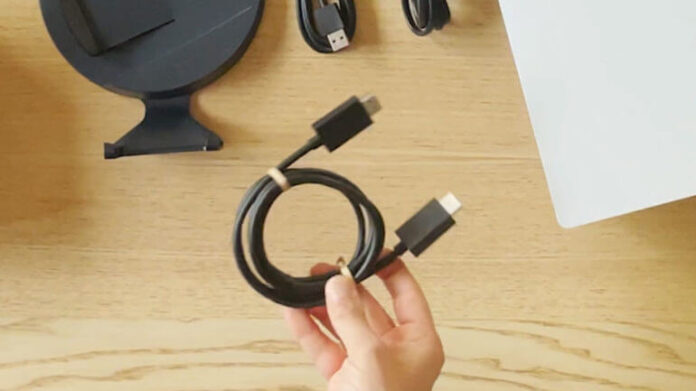The release of the PlayStation 5 is looming on the horizon, and there is much speculation about what new features it will include. One topic of particular interest is whether or not the new console will come with an HDMI 2.1 cable.
This cable has several benefits over older versions, including increased bandwidth and support for 8K resolution. In this article, we’ll explain everything you need to know about HDMI 2.1 and PS5.
Read on to learn more…
Does ps5 Support HDMI 2.1 cable?
YES. The Playstation 5 comes with an HDMI 2.1 cable in the box. This cable can transmit data at up to 48 Gbps, the highest data rate currently available on the market. The cable is also backward compatible with older versions of HDMI (high definition multimedia interface) so that you can use it with your existing devices.
If you’re looking for the best possible gaming experience on the PS5, you’ll need to ensure that your TV or monitor supports HDMI 2.1 for the best visuals. This will allow you to take the power of the console’s 4K resolution and high frame rate capabilities.
This ultra-high-speed cable is capable of supporting 8K resolution and 120Hz refresh rates. If you don’t have an Xbox series or 4K gaming TV, you won’t be able to take advantage of the PS5’s full potential. Many newer TVs support HDMI 2.1, but if yours doesn’t, you can always buy an aftermarket cable that supports the standard.
The PlayStation 5 comes with a high-speed HDMI cable in the box, which is required to connect the console to a 4K TV. However, the console will still work with 1080p TVs, and you’ll be able to play all PS5 games on it without any issues.
What is HDMI 2.1?
HDMI 2.1 is the latest version of the HDMI specification and significantly increases bandwidth over previous versions. this new cable supports resolutions up to 8K at 60 Hz and 4K at 120 Hz, as well as new attributes such as HDR10+, dynamic HDR, and ultra-low latency mode. HDMI cable 2.1 is also backward compatible with older versions of the HDMI specification.
It offers several significant improvements over previous versions of the HDMI specification. Perhaps most notably, it keeps the resolutions up to 8K at 60 Hz and 4K at 120 Hz. This ultra-high-speed HDMI cable can easily handle even the most demanding 4K content and will be future-proofed for any 8K content that may become available.
HDMI 2.1 supports HDR10+, dynamic HDR, and ultra-low latency mode. These improve picture quality, screen contrast, and color depth and reduce input lag, making for a more enjoyable viewing experience.
- Further: How to Delete Games on PS4?
If you’re looking for the latest and greatest ultra-high-speed HDTV technology to play first-person shooters (FPS) or any other games, then it is the way to go. It offers significantly increased bandwidth over previous versions, support for resolutions up to 8K at 60 Hz and 4K at 120 Hz, and new features such as HDR10+, dynamic HDR, and ultra-low latency mode. HDMI cable 2.1 is also backward compatible with older versions of the HDMI specification, so you can still use your existing HDMI cables and devices for TV and Xbox visuals.
How long is the PS5 HDMI 2.1 cable?
The included cable for the PS5 is a great example of how a gaming console can be future-proofed. The PS5 USB-C to USB-A cable and power cable are 1.5m (150cm) long, which is just long enough to reach from the console to the TV. The HDMI cable is also 1.5m (150cm) long, so you won’t have to worry about buying a new HDMI cable when you upgrade your TV. The only downside of the included cable is that it’s not compatible with 4K TVs, but you can buy an adapter for that.
Some Features of HDMI 2.1
1. Higher video resolutions up to 10K
One of the most significant is support for higher video resolutions, up to 10K. This means you can now enjoy Ultra HD content at its full resolution without any downscaling. It also helps several other elements that improve the overall experience, such as HDR10+, 4K at 120fps, and more. If you’re looking for an ultra-high-speed cable to get the most out of your 4K TV, PC, monitor, or PS5, HDMI 2.1 is the way. It is always advisable to buy such gadgets or new consoles from your trusted partners.
2. Support for HDR (High Dynamic Range) video
Unlike traditional video signals limited to a standard range of brightness levels, HDR signals can carry much wider brightness levels. This allows for more realistic and lifelike images, videos, and graphics on HDR-compatible displays.
In order to take advantage of the increased dynamic range offered by HDR, HDMI 2.1-compliant devices (such as Samsung TVs, New gaming consoles, projectors, and AV receivers) must be used. These devices are equipped with HDMI 2.1 ports that accept HDR video signals.
3. Enhanced Audio Return Channel (eARC)
Enhanced Audio Return Channel (eARC) allows transmitting high-quality audio from a TV to a soundbar or audio receiver. eARC is handy for those who want to get the most out of their sound system.
HDMI 2.1 Enhanced Audio Return Channel (eARC) is available on most newer TV models and can be found in the settings menu. For best results, it is recommended to search and use ultra high speed HDMI cables certified by the HDMI Licensing Administrator. If you have any issue connecting it to the TV, you can contact the TV manufacturers for quick assistance.
4. Variable Refresh Rate (VRR)
Variable Refresh Rate (VRR) reduces or eliminates screen tearing. Screen tearing is a visual artifact that can occur when a game’s frame rate is not in sync with the display’s refresh rate. This can result in a “tearing” effect, where the image quality on the screen appears to be split into two or more pieces.
VRR is a new feature of HDMI 2.1 that is designed to solve this problem. VRR allows the refresh rate of a display to be dynamically adjusted to match the frame rate of a game, eliminating screen tearing.
5. Auto Low Latency Mode (ALLM)
HDMI 2.1 auto Low Latency Mode (ALLM) is a feature that allows your TV to automatically switch to the low latency mode that is best suited for the content you are watching. This can be helpful if you watch a lot of fast-paced content, such as action movies or video games. It is available on all HDMI 2.1-compliant TVs.
To use ALLM, connect your HDMI 2.1-compliant TV to an ALLM-enabled device, such as a game console or Blu-ray player. When you start watching content, the TV automatically switches to the low latency mode best suited for that content. You can also manually select the low latency mode you want.
Overall, ALLM is a great way to improve your viewing experience, especially watching fast-paced content.
- Further: How to connect AirPods to ps4?
Difference Between HDMI 2.1 and HDMI 2.0
The most significant difference between HDMI 2.1 and HDMI 2.0 is in the bandwidth they offer. HDMI 2.1 supports up to 48Gbps, while HDMI cable 2.0 supports up to 18Gbps.
This increase in bandwidth allows for a few key improvements in the HDMI 2.1 standard. Firstly, it holds up resolutions up to 10K (10,240 x 4320). Secondly, it enables frame rates of up to 120fps at 4K resolution and up to 240fps at lower resolutions.
The ultra-high-speed HDMI 2.1 also introduces a new feature called Dynamic HDR. This allows each video frame to have unique HDR data, resulting in a more realistic with lifelike image quality.
Finally, HDMI 2.1 introduces support for eARC (Enhanced Audio Return Channel). This allows for the easy transfer of high-quality audio signals from a TV to an audio receiver or soundbar.
HDMI 2.1 Cable for PS5
HDMI 2.1 is the latest version of the HDMI standard and offers several significant improvements over previous versions. One of the most important is support for 4K at up to 120Hz, which is ideal for gaming consoles and next-gen consoles. PS5 is one of the first next-gen consoles to take benefit of this, which is why gamers are choosing to upgrade their cables.
Another key element of HDMI 2.1 is dynamic HDR, which can adjust the picture on a scene-by-scene basis to provide more realistic colors and contrast. This, combined with the increased resolution and frame rate, makes for a noticeably capable better gaming experience. If you’re looking to get the most out of your PS5, HDMI 2.1 is the way to go.
Finally, HDMI 2.1 also reinforces eARC, which allows for easy connection of high-quality audio devices. This is great for gamers who want to get the best sound out of their games, and it’s also convenient for those who want to use their Sony PS5 or Xbox as a media center. If you have a compatible next-gen console, Samsung TV, and audio setup, eARC is worth considering for the best entertainment.
Whether you’re looking for better performance or want to future-proof your gaming setup, HDMI 2.1 is the way to go. And with the PS5 taking full support of its capabilities, now is the perfect time to upgrade your hardware cables.
How To Identify PS5 HDMI Port Problems
If you’re having trouble getting your PS5 to connect to your TV display, it may be due to a problem with the HDMI cable. Here’s how you can check if that’s the case and what you can do to fix it.
First, ensure that the HDMI cable is firmly inserted into the PS5 and the TV. If it’s not, try unplugging and replugging the HDMI cable.
Try a different HDMI port on your TV display if that doesn’t work. If you have more than one, try each one until you find one that works.
If you still can’t get a connection, the problem may be with the sony PS5 itself. Try resetting the console by holding down the power button for 10 seconds. You may need to contact Sony for further assistance if that doesn’t work. good example
There you have it! If you find this article helpful please let us know in the comment section.
HA Bytes is heading towards becoming a leading digital publisher in the tech industry, Your support is needed. Tell us bugs to help us take place in the industry like other future brands.

